The yachting°com Sailing Guide to Spain
Why sail in Spain?
Spain is a wonderful Mediterranean yachting destination. The season here is never-ending and the conditions are ideal, especially for experienced sailors. Spain will simply get under your skin and the most beautiful and adventurous way to explore it is by boat.
- Enjoy wild untouched terrain, ancient sights and remarkable modern architecture, bustling cities and deserted bays.
- Crystal-clear waters around the Balearic Islands, beautiful hidden coves covered with fine sand, beaches and abundant marine life make it a perfect destination even for family holidays.
- Sailing around the Canary Islands of La Palma, El Hierro or La Gomera is demanding ocean yachting that will test all experienced sailors.
- Spice up the trip with buzzing nightlife, sensual flamenco, delicious tapas and fragrant paella.
Ask me about sailing in Spain.
Leave your contact details below:
Yachting areas in Spain
Spain is a highly diverse yachting destination. It boasts over five thousand kilometres of coastline and numerous islands and islets. The islands are more spaced out than in Croatia, so renting a boat for at least 14 days is ideal.
The Balearic Islands will enchant you with their pristine countryside, beautiful harbours and deserted beaches. Of course, younger people will appreciate the nightlife in Ibiza.
The Canary Islands are a whole different world of yachting, where you will experience challenging ocean sailing. The continental coast of Spain will be of interest particularly to those who like to combine a sailing vacation with exploring Spanish culture.
Balearic Islands
The Balearics are a stunning paradise with exquisite scenery, beaches and beautiful harbours teeming with history. They consist of the Gymnesian Islands (the islands of Mallorca, Menorca and several smaller islands and islets such as Cabrera) and the Pityusic Islands (the islands of Ibiza, Formentera and several others).
Each of the three main islands, Mallorca, Menorca and Ibiza, is a separate sailing area. The weather here is calm, so you can enjoy the longest yachting season in the whole of the Mediterranean (similar to Sicily or the southern coast of Turkey). The yachting season on the Balearic Islands lasts from April until the end of October. There is a relatively large distance between islands, so if you do sail here, you will probably not be able to go from one island to another.
This is not a destination for complete beginners, because when the mistral blows in the Balearics, it really is a sight to behold. The weather can be extremely challenging and the choppy sea very unpleasant. This strong breeze can also be an advantage - you can sail around all three islands when the wind is up. In summer, however, the weather on the Balearic Islands is relatively stable.
Mallorca
The largest of the Balearic Islands is Mallorca, where you can also find the most charter companies and boats. Mallorca combines everything we love about yachting: beautiful natural scenery, plentiful history, coves, beaches, small ports and adjacent islands. Palma de Mallorca is a magnificent medieval town and harbour that has been of importance since the time of ancient Greece.
We definitely recommend a visit to Cabrera National Park and nature reserve. It is located in the south of Mallorca and you’ll need a paid permit to enter, but it is well worth it. It is the perfect place for snorkelling and scuba diving.
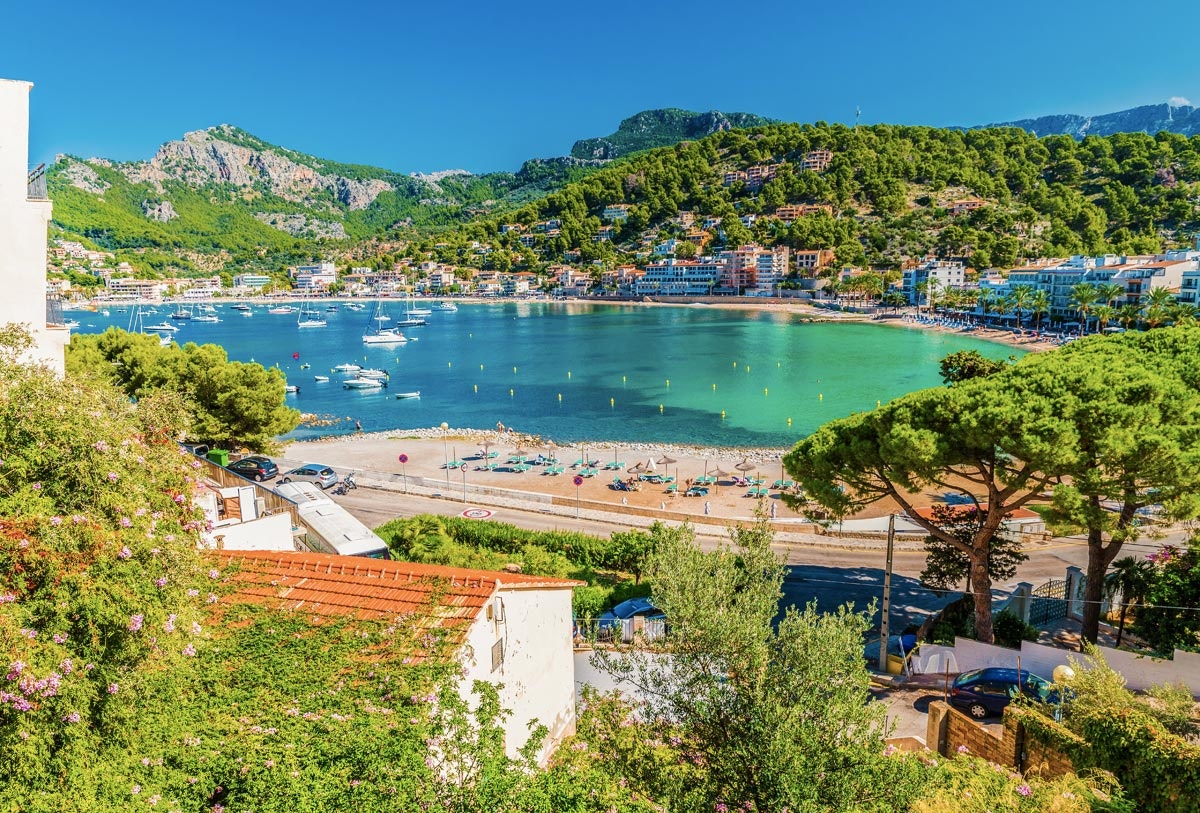
Menorca
Menorca is a rugged island with an almost infinite number of virgin bays and idyllic beaches, even more than Mallorca and Ibiza combined. Most of these beaches are untouched and only accessible from the sea. For sailors, it really is the ideal island for sailing and swimming. On the north of the island, the sand on the beaches ranges from gold to red, while the southern coastline is lined with white sandy beaches.
The island boasts great natural diversity and many endemic species. Besides the beaches and impressive scenery, Menorca has towns with fascinating tales to tell of their past. A visit to Ciutadella and Mahón is certainly worth your time.
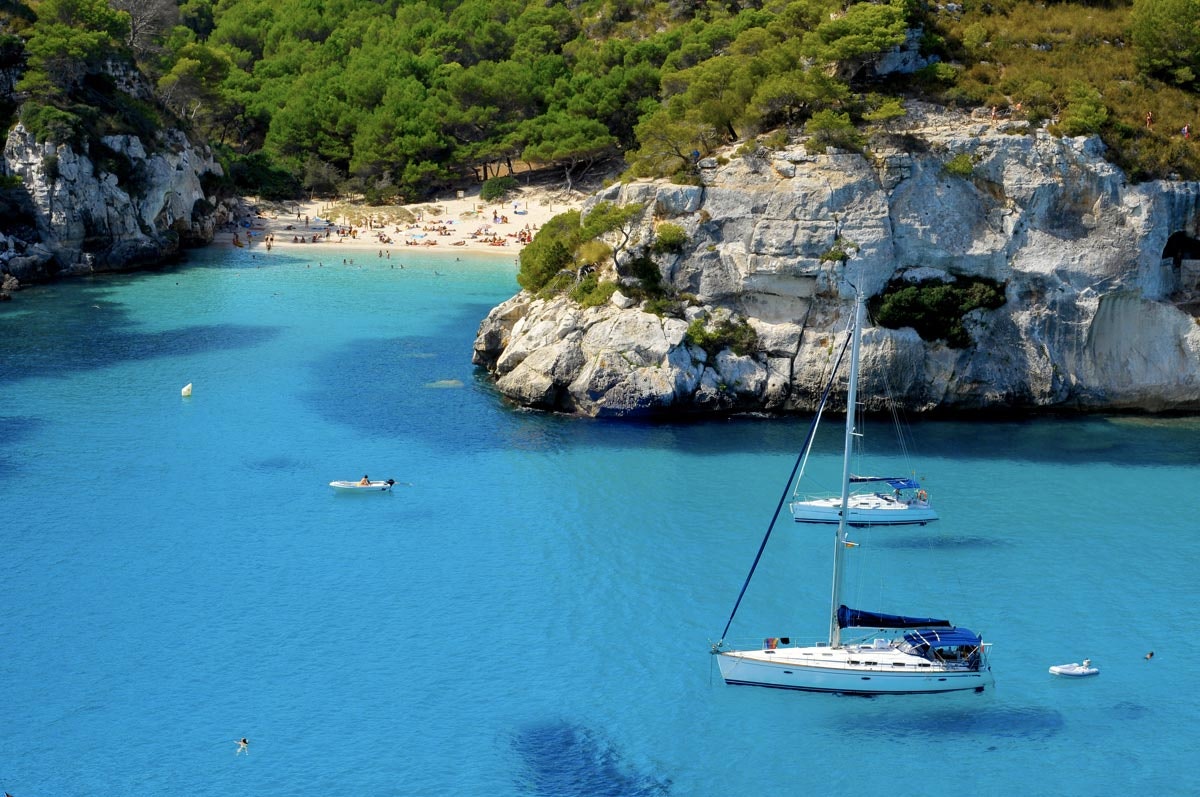
Ibiza
The island of Ibiza is the centre of entertainment and nightlife, ideal for young people. Boat rental can be considered a relatively cheap form of accommodation when compared to Ibiza hotels.
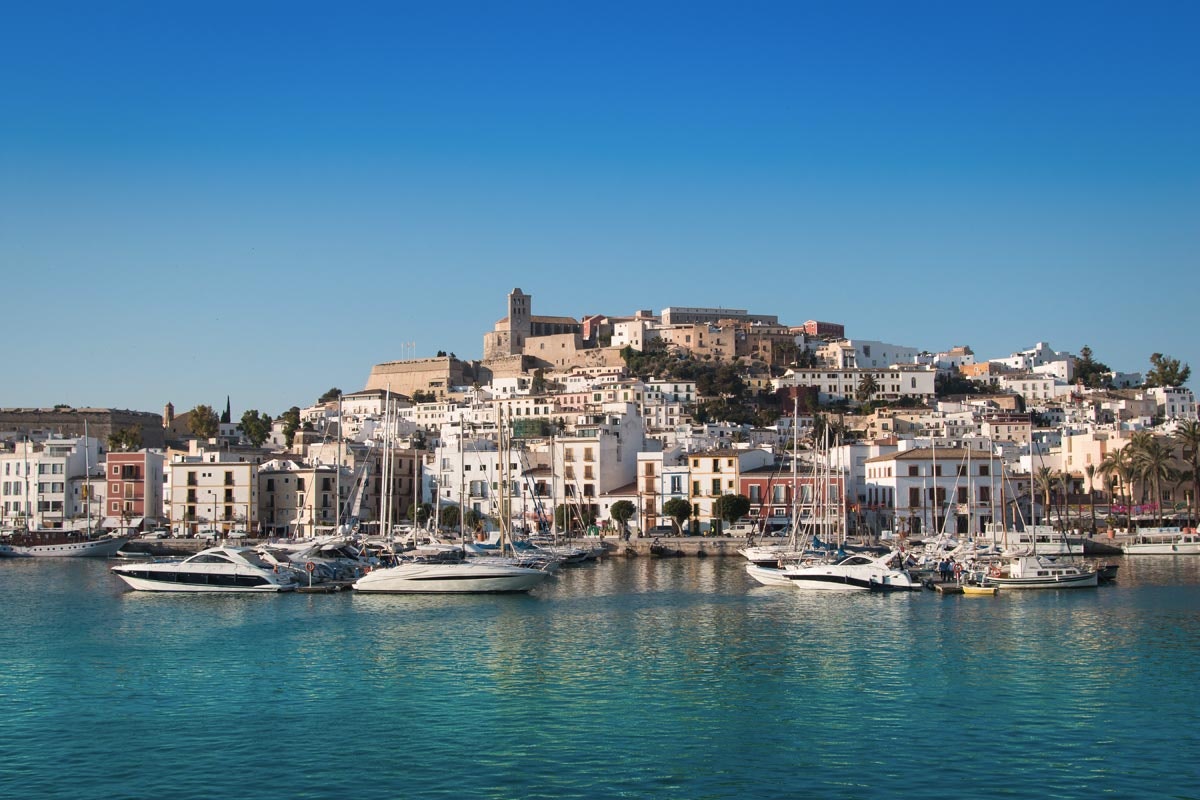
Formentera
Neighbouring Formentera is the polar opposite of Ibiza. It is beautiful, untouched and only accessible by boat. Famous for its white sandy beaches, azure Caribbean-like sea and wonderful tranquillity, it is rightly called the last Mediterranean paradise.
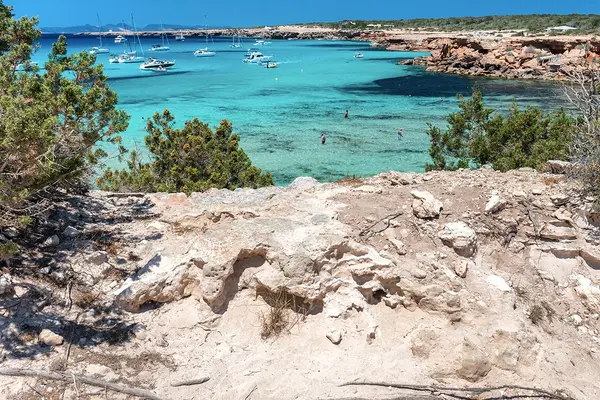.jpg)
Canary Islands
The Canary Islands are a very demanding year-round yachting destination. They offer unique experiences and challenges, but should only be tackled by experienced sailors or crews led by an experienced captain. Sailing around the islands of La Palma, El Hierro or La Gomera is truly demanding ocean yachting.
Each of the “islands of eternal spring” are captivating but offer completely different scenery. Fuerteventura is lined with long sandy beaches, the island of red volcanic rock - Lanzarote - is green only in February and March, Tenerife is dominated by jagged and steep snow-capped peaks. Gran Canaria is literally a miniature continent. You can find everything from dry desert landscapes to rainforests. The other three smaller islands of La Palma, Gomera and Hierro with their lonely beaches and well-preserved countryside are almost swallowed up by the wild Atlantic.
You can sail out of Fuerteventura, Lanzarote, Gran Canaria or Tenerife. The most interesting voyage is the route from Gran Canaria or Tenerife to the islands of Gomera, Hierro and La Palma. Islands off the beaten track, islands with wild and beautiful ocean-whipped terrain. It's an irresistible yachting challenge.

The Spanish coast of the Mediterranean Sea
The Spanish coast of the Mediterranean also offers plenty of interesting places to visit, but they simply can't compete with the Balearic or Canary Islands.
The coast of Catalonia from Barcelona in the north to France, called the Costa Brava (Wild Coast), is full of beaches and hotel resorts, but it's not such an attractive yachting prospect. However, renting a boat in Barcelona will offer you a unique opportunity to discover a city full of modern architecture, monuments and bustling street life with street music and renowned tapas bars. You can sail along the Catalan coast, enjoy the sun and relax on board a sailboat with family or friends. Thanks to its location, Barcelona is also a good starting point for a boat trip to the Balearic Islands.
The most interesting place is definitely the Costa del Sol between Malaga and Cádiz. Here the sun shines three hundred days a year and the sea is emerald green. You can cross from the Mediterranean Sea through the Strait of Gibraltar to the Atlantic and into another sailing world. A world of strong tides, currents, big waves and strong winds and the wild beauty of the Atlantic coast of Spain.
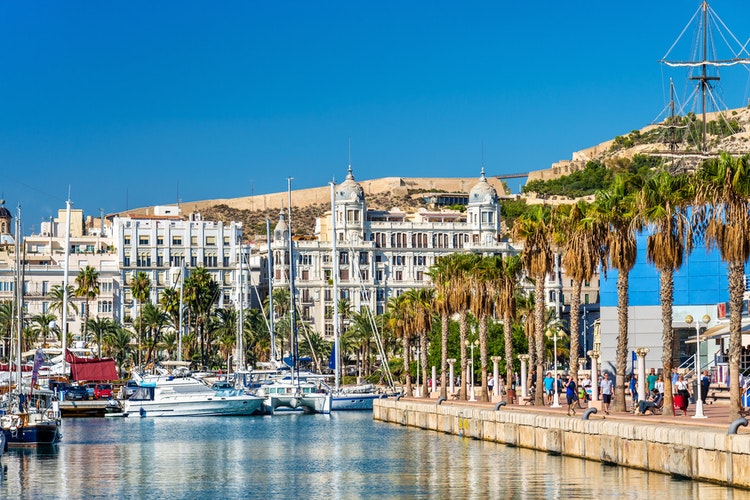
Sailing south along the Costa del Azahar (Orange Blossom Coast) and Costa Blanca (from Valencia to Alicante) is more interesting than the Costa Brava. You can enjoy sandy and pebble beaches and a diverse coastline. The straight and tranquil shoreline alternates with steep cliffs where you’ll discover large bays and tiny, well-hidden coves. Watch towers are a reminder of the plundering pirates of long ago and you can delight in the picturesque fishing harbours.
Weather and climate in Spain
The Spanish climate is very diverse. The east and south of the country are very warm, predominantly sunny with minimal rain. Winters are mild. The northern coast is rather colder and typically has a lot of rain. In summer, the average air temperature is around 25°C, in winter around 15°C.
- The Spanish islands are very different from the rest of Spain. The Canary Islands have a subtropical climate with very summery temperatures and minimal rain. Winters here are mild and pleasant. The temperature of the sea rarely falls below the long-term average of 20°C.
- Weather in the Balearic Islands is much more diverse and changeable. Summers are hot, winters can be rainy and accompanied by onshore winds.
- Barcelona boasts a Mediterranean climate with mild winters and hot summers. The coldest month is January and the hottest is August. Temperatures are relatively stable here and it is not very windy.
Weather forecasts can be found on the following VHF channels:
Channel 10 at: 06.35, 09.35, 14.35, 19.35 UTC; as well as channel 16: every 2 hours ‘to all ships.’ Menorca: channel 68. Rádio 1755 kHz Palma 07.50, 13.03, 9.50 UTC.
Wind
The prevailing winds in the Balearic Islands are not stable. The Mistral, a strong-to-stormy cold wind, can really complicate sailing. The most frequent and strongest storms occur in winter, when winds can reach up to 12 BFT. The Mistral, unlike the Croatian Jugo, does not come in gradually but very suddenly and can last for several days. Sailors must therefore pay close attention to weather forecasts in these areas.
In the Canary Islands, the passat trade wind blows steadily. Seemingly ideal conditions for yachting, but they are complicated by acceleration zones. These are due to the very high mountains on the islands. The sea around the islands is full of windless areas (so-called wind shadows), but also places where the wind is stronger than the surrounding area (the acceleration zones). The increase in wind speed in acceleration zones is also very fast - a sharp increase of 5 BFT to 8 BFT is not likely to make a sailor very happy.
#BBD0E0 »
Spanish gastronomy
Spanish cuisine is colourful, fragrant and very diverse, with the individual regions differing in the way they prepare ingredients and how they combine them. Fish and salads predominate on the coast, inland it's meat dishes and thick soups. It consists mainly of fresh ingredients, and olive oil and garlic are typically used everywhere. Basic ingredients include fish, seafood, meat, fresh vegetables (potatoes and tomatoes are favourites), fruit, herbs, saffron, hot peppers, rice, olives. The Spanish also love stews, grilled meat, dry-cured salami and ham.
Paella - a delicious saffron risotto cooked and served in a huge paella pan. You can often see it being prepared in the street. The variations are endless - you can add meat, vegetables or seafood. Arros negre is a black seafood paella coloured with sepia ink, which adds an unmistakable flavour.
Gazpacho - a refreshing cold soup made from blending tomatoes, garlic and other vegetables.
Tapas - any small delicacies. On a plate of tapas you might find fabulous olives, tasty cheeses, fried pieces of cuttlefish, sausages, pickled or grilled vegetables, anchovies, meatballs, seafood and other tasty morsels.
Tortilla de patatas - a special thick omelette made from eggs, potatoes and onions and fried in oil.
Cozido (or puchero, olla podrida, caldereta, frite, cocido, caldo, marmitako) - a stew. Every region has its own special recipe.
Canarian Gofio - flour made from roasted wheat or corn
Mojo - sauce made from oil, vinegar, salt, garlic and various herbs and spices.
In the kitchens of the Balearic Islands, pork - prepared in a variety of ways - predominates. One national dish is lechona, suckling-pig roasted on a spit. Also try the traditional sobrasada, a spicy smoked sausage, which can be spread on bread.
Important sailing information
Spain has decent yachting infrastructure, reasonable prices and a very long yachting season. We recommend booking the marinas in advance especially during high season. In peak season, your chosen marina can be full or too expensive. It is also advisable to borrow an updated sailing pilot book. Beware of anchoring in prohibited areas, Ibiza especially is known for handing out fines.
In the Balearic Islands, the state-owned Ports IB are much cheaper than other commercial marinas. Ports IB can be booked and paid for online. It is also possible to book mooring buoys through CBBAsea.
Diving in Spain
The Canary Islands captivate the heart of every diver and sailor. Average visibility is over 30 metres and the temperature does not drop below 20°C even in winter. Enjoy stunning diving between volcanic rocks and cliffs. Compared to the Mediterranean Sea, the Atlantic is much more diverse. There are schools of colourful fish, giant shrimp, tuna, barracuda, moray eels, octopuses and turtles waiting for you here. You can often meet pods of dolphins and may even encounter whales or manta rays.
Diving in the marine reserve off the island of Lanzarote, which comprises part of the northwest coast and the islands of La Graciosa, Montaña Clara and Alegranza, is an unforgettable experience. Fishing is prohibited here, and diving is subject to a special permit.
You will be enchanted by the even wilder Roques de Salmor on the island of El Hierro, whose massive rocks, cliffs, caves and deeper rifts offer hiding places for a truly huge array of fish of all shapes and colours. You will likely be able to observe skate, manta rays, sharks and schools of snapper and barracuda.
We also strongly recommend a visit to the Cabrera National Park and Nature Reserve. It covers the south of Mallorca and you need a paid permit to enter, but it is well worth it.
Contact yachting°com today about your next sailing holiday in Spain or browse available yachts below.
